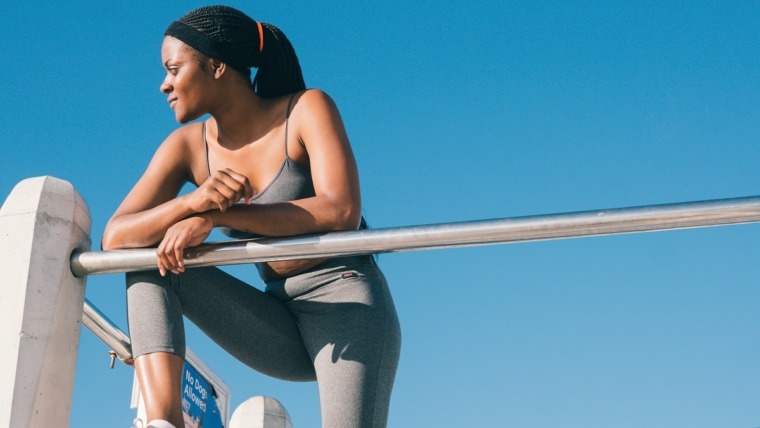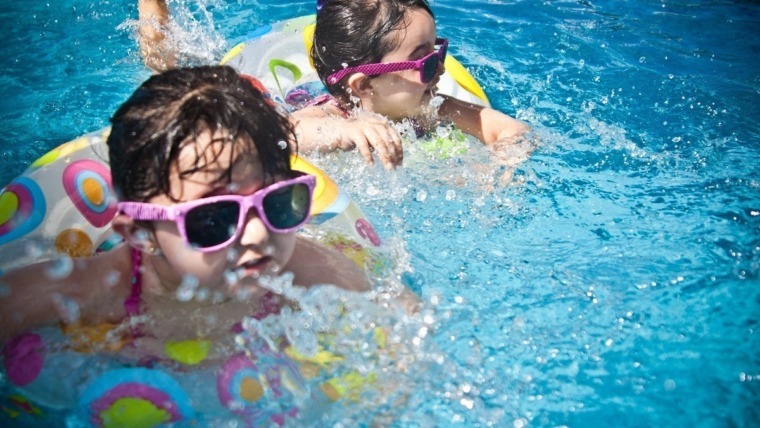
Written by Michael Dermansky – Senior Physiotherapist – MD Health
We know that regular exercise is good for our body, our muscles, heart and brain, but is it good for our skin as well? Not really surprisingly, yes it is. There are both immediate and long-term benefits of exercise on your skin health, but a few good practices can help manage the side effects of exercise on your skin.
The Benefits Of Exercise On Skin Health
The immediate benefit of exercise is that your skin will “glow”. Increased blood flow to the skin during exercise helps flush out cellular debris, improve drainage of the lymphatic system and reduce puffiness of the eyes. Combined with the endorphins released during exercise, these factors are the primary reason for the exercise “after-glow”.
In addition, due to sweating, as long as you have cleaned your skin before exercising (such as removing make-up and skincare products) can help clear out your pores from exercising.
In the long term, the benefits are much more profound. Most importantly, exercise promotes collagen production, the production of new skin cells and ultimately anti-ageing of the skin. Although the absolute mechanism of how this happens is not fully known, it is believed that exercise reverses the damage to the component of the cells called mitochondria, the power station of cells that produce the skin cell’s fuel chemical, ATP. This allows cells to more easily repair and make components such as collagen and hyaluronic acid.
In general, it was found that people who exercise regularly have a thicker second layer of the skin, the dermis. A thinner dermis layer is associated with sagging skin and wrinkles. One potential explanation for this is exercise increases the release of an immune chemical (Interleukin 15), which may facilitate this process.
Regular exercise is also known to reduce stress and is a natural treatment for anxiety and depression. When we are overly stressed, our body releases a natural hormone, cortisol together with adrenaline as part of the fight and flight response. Cortisol raises our blood sugar levels, which leads to more glycation in skin cells, the binding of sugar to proteins such as collagen, which causes damage and ageing over time.
Finally, regular exercise improves sleep which helps both in reducing stress (lowering cortisol levels) and the healing and skin repair process. Repair occurs when you sleep, so a healthy 7-9 hours of sleep a night is a major part of healthy skin.
The Minor Side Effects Of Exercise & How To Manage Them
There are a small number of minor, but very manageable side effects of exercise that can be kept under control with good skin habits accompanying your exercise routine
- Acne and break-outs – If you exercise with make-up or clogged pores, sweating can lead to a build-up of bacteria and breakouts. A few good habits can help minimise this outcome. Ideally, exercise without putting on make-up or at least removing make-up and foundation before exercising. If you have to wear make-up during a workout, choose products that are non-comedogenic, meaning they won’t clog up your pores. After your workout, having a quick shower helps clear the skin of sweat, oils, and bacteria and helps to keep pores clean. The salt in sweat can lead to seborrheic dermatitis or dandruff, which is caused by yeast that lives on our skin. Other issues which may be caused by sweating include eczema and psoriasis, which can be minimised by a post-workout shower. Finally, if a post-workout shower is not an option, cleansing the skin with either salicylic acid or benzoyl peroxide wipes can help. Salicylic acid is oil-soluble and can penetrate effectively into the pores, providing deep exfoliation as well as preventing excess oil production. Benzoyl peroxide kills bacteria which leads to acne and odour, however, can be irritating for people with sensitive skin and therefore may not be the right product for everyone. At a minimum, washing your face and wiping your body with lukewarm water will go a long way in minimising breakouts.
- Rosacea – this can flare up with increased blood flow to the skin and increases in body temperature with exercise. Good habits to minimise this reaction may be to exercise in either an air-conditioned environment or during a cooler part of the day. In addition, looser fitting clothing that allows the body to stay cooling during a workout will help. Finally, applying a cool compress to the problem areas after your workout can also settle symptoms
- Sun damage from exposure – the damage caused by the sun from exercising outdoors not only increases your risk of skin cancer but also undoes the benefits of exercise on skin health. If you choose to exercise outside during the hours of the highest ultraviolet light exposure, applying sunscreen regularly is a must. You may be reluctant to use sunscreen during exercise because it can be greasy and it gets into their eyes causing stinging. Newer Ph-balanced sunscreens are available that don't sting. In addition, sweating can remove sunscreen as you exercise, meaning it takes 40% fewer UV rays to burn your skin than when you are not exercising. This means that wearing loose, comfortable clothing that covers exposed areas of your body and a hat will give you added protection against skin damage. Finally, remembering to make it a habit to regularly reapply sunscreen as you exercise especially if you are exercising for prolonged periods of time will minimise your risk.
Regular exercise should clearly be a normal and consistent habit for your skin health and your overall health, but a few small and important practices, such as wearing appropriate clothing, exercising make-up free, showering post-exercise or other cleansing practising and using appropriate sun protection can go a long way in making your skin health the best it can be.



